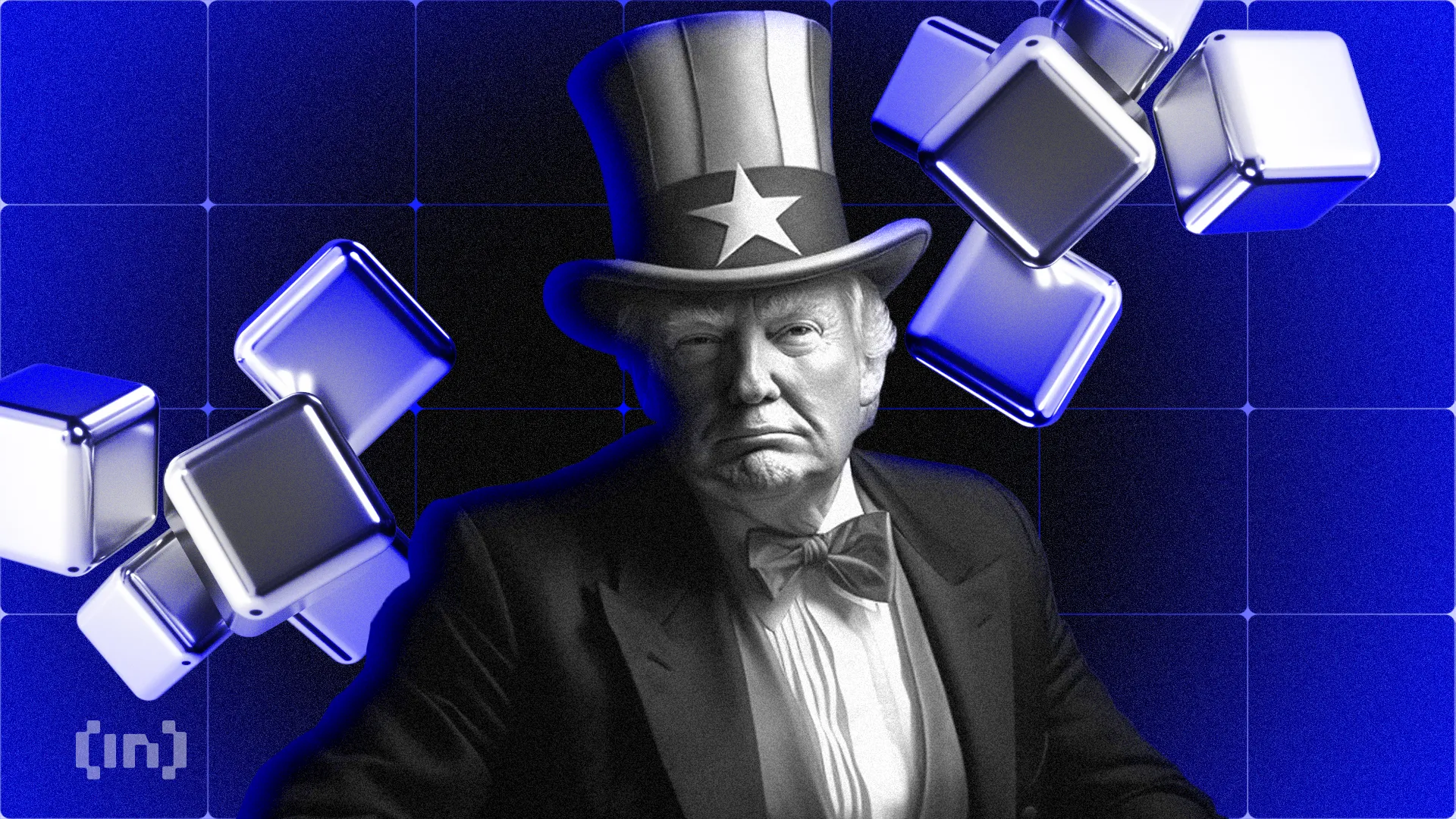Bitcoin
Crypto Whales Halt Buys Amid $46,000 Target
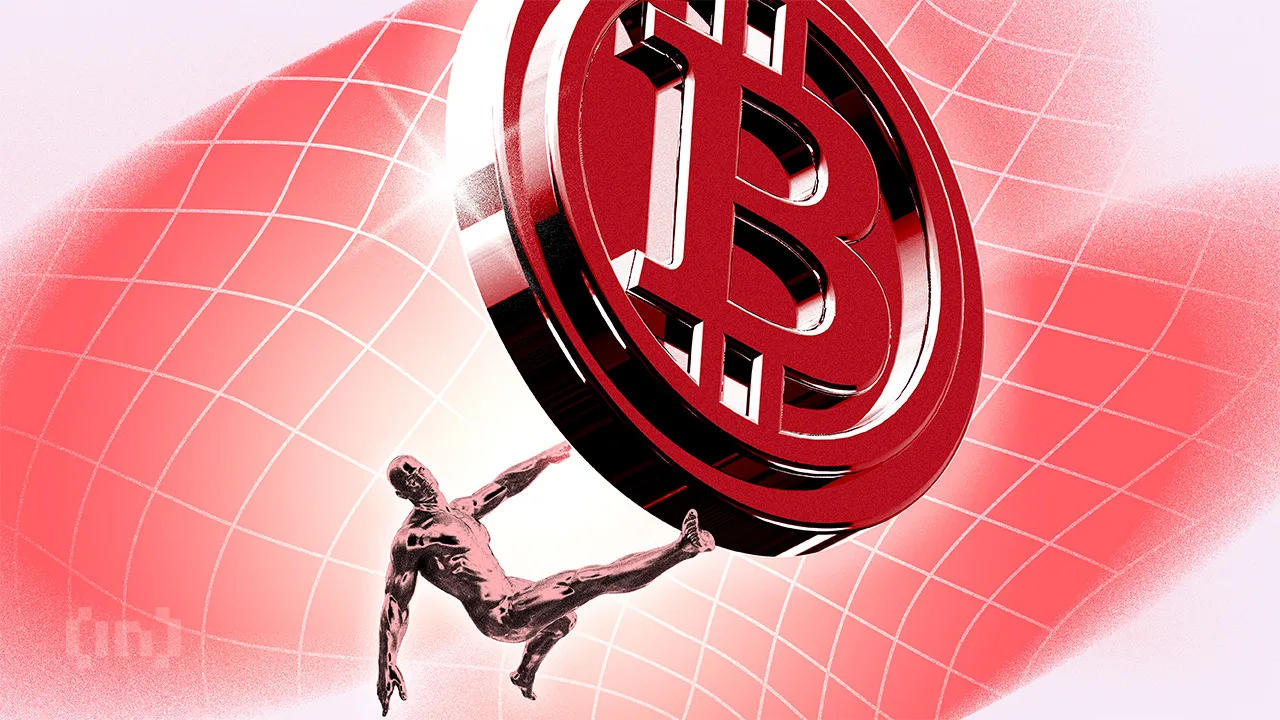
Bitcoin’s (BTC) price appears to be in a precarious situation as major stakeholders, often referred to as crypto whales, have reportedly paused their buying activities.
This halt in purchases has sparked concerns about Bitcoin’s future valuation, particularly as technical patterns indicate a bearish trend. Historically, such trends have been associated with prolonged downswings or periods of consolidation.
Crypto Whales Step Back as Bitcoin Turns Bearish
Recent data from Lookonchain suggests that institutions have stepped back from Bitcoin purchases, coinciding with a 1.44% decline in Bitcoin’s value over the past 24 hours. Currently, Bitcoin is trading around $58,300, a drop from last Monday’s high above $61,900.
The recent price decline below the $60,000 mark seems to have impacted institutions’ interest in Bitcoin.
“Institutions seem to have temporarily stopped buying, and the price of BTC dropped 4.5% today! We noticed that institutions stopped receiving USDT from Tether’s Treasury and transferring it to exchanges 2 days ago,” Lookonchain stated.
Additionally, stablecoin deposits to Tether’s Treasury have declined, and an outflow of 1.3 billion USDT has been made to exchanges since the August 5 crypto market crash, indicating reduced buying pressure and a more cautious approach from investors.
Amid these concerns, trading veteran Peter Brandt pointed out that Bitcoin could have witnessed a trend reversal from bullish to bearish. The analyst spotted a “death cross” on the weekly chart between the 8 and 19 simple moving averages (SMA).
Although this is not always a reliable predictor of future price, it suggests the beginning of a downtrend.
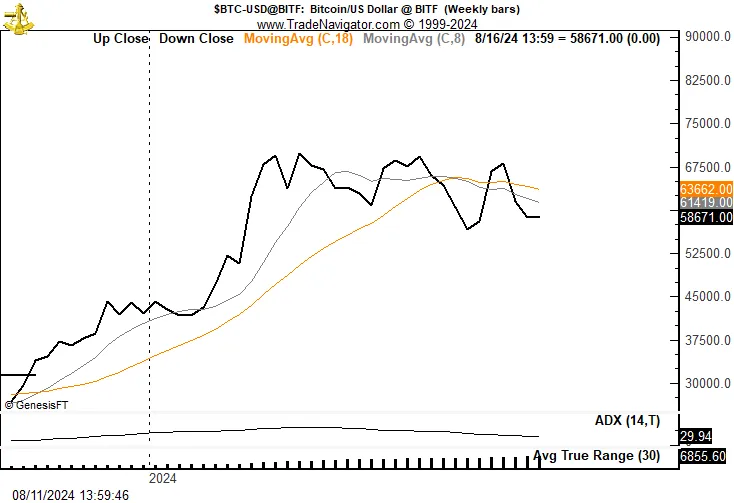
Interestingly, David Puell, a Research Associate at ARK Invest, provided insights into Bitcoin’s critical support levels in the event of a price correction.
“Bitcoin’s most important price supports are at $52,000 and $46,000, the latter confirmed by its on-chain mean, the red line on the chart,” Puell explained.
Read more: Bitcoin (BTC) Price Prediction 2024/2025/2030
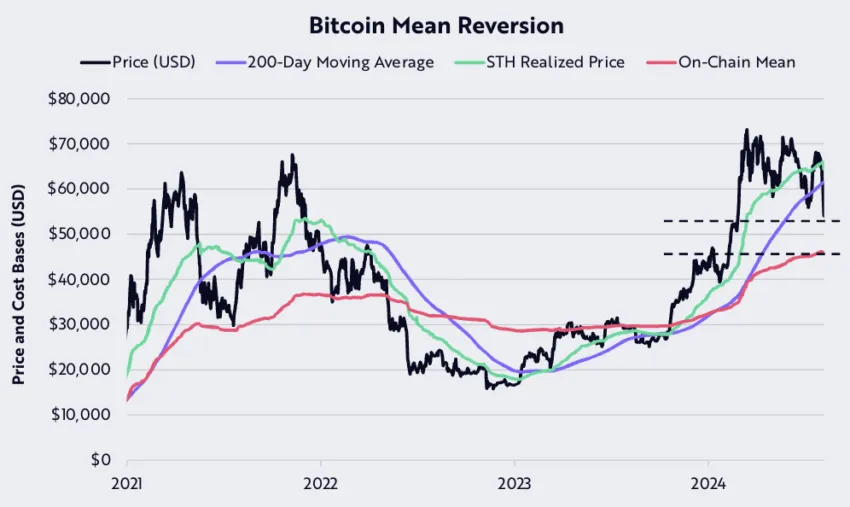
In summary, Bitcoin’s current technical conditions, marked by the pause in institutional buying and the emergence of a death cross, suggest a cautious outlook in the short term. With critical support levels identified and market sentiment leaning towards risk off, the coming weeks will be pivotal in determining whether Bitcoin can stabilize or if further declines are on the horizon.
Disclaimer
In line with the Trust Project guidelines, this price analysis article is for informational purposes only and should not be considered financial or investment advice. BeInCrypto is committed to accurate, unbiased reporting, but market conditions are subject to change without notice. Always conduct your own research and consult with a professional before making any financial decisions. Please note that our Terms and Conditions, Privacy Policy, and Disclaimers have been updated.
Bitcoin
US Dollar Index Drops – What Does It Mean for Bitcoin?

Amid the recent implementation of President Trump’s “Liberation Day” policies, the US Dollar Index (DXY) has plummeted to its lowest level since mid-October 2024. This signaled a turbulent time for the greenback.
Despite the downturn, some analysts believe the weakening dollar could fuel short-term gains for Bitcoin (BTC).
Could Bitcoin Benefit From a Weaker Dollar?
The DXY, a key measure of the US dollar’s strength against a basket of major currencies, has been under pressure amid a combination of factors. Growing concerns over a potential recession and escalating global trade tensions have contributed to this downtrend.
After reaching a two-year high in early January, the DXY has experienced a steady decline. Furthermore, it has shed nearly 4% in the first quarter alone.
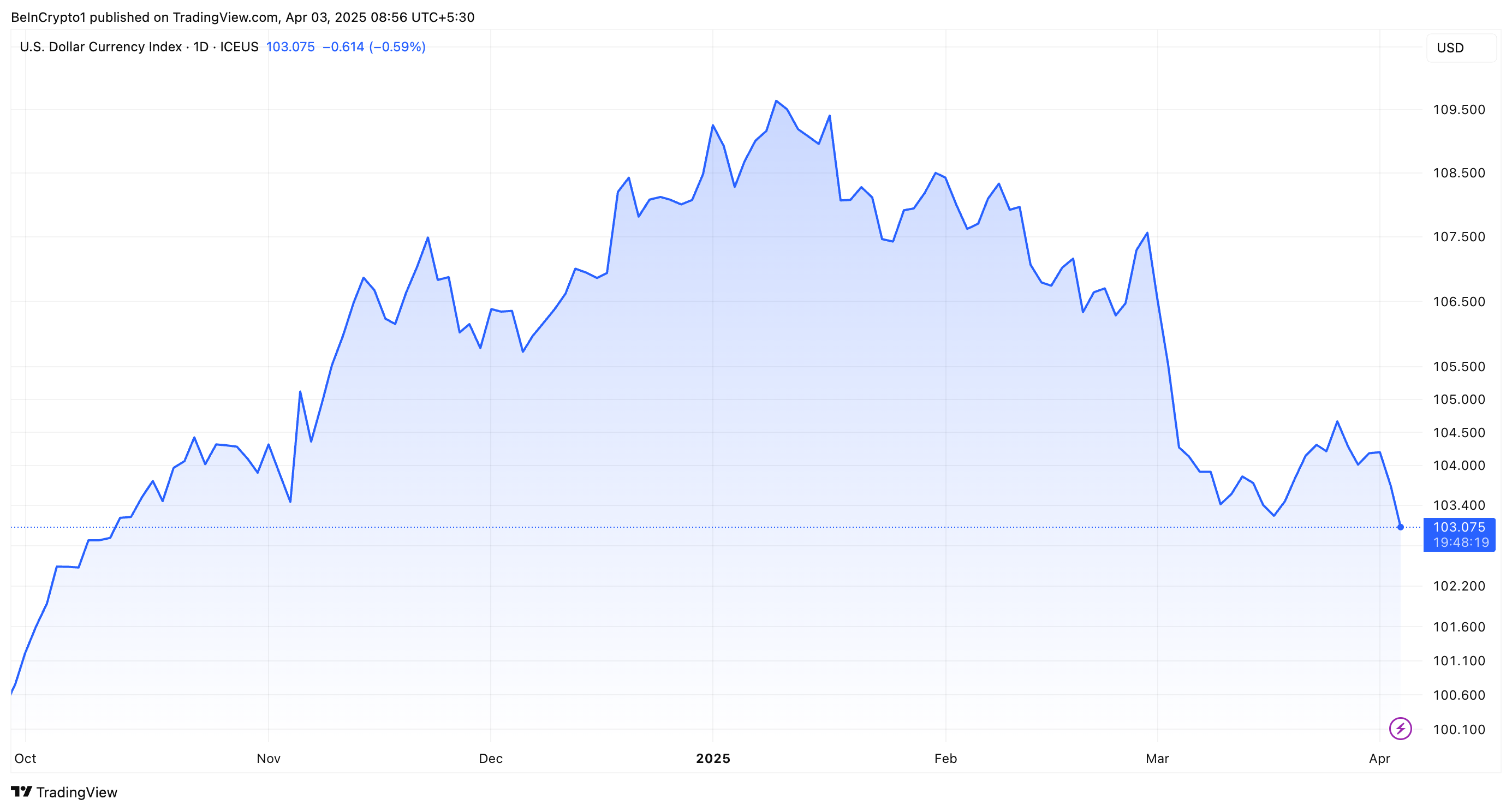
Economist Peter Schiff highlighted the dire state of the DXY in the latest X (formerly Twitter) post.
“The US Dollar Index has fallen to its lowest level since Oct. and looks like it’s headed much lower,” he wrote.
Schiff emphasized that contrary to expectations that a strong US dollar might alleviate the impact of tariffs on American consumers, the reality of a weakening dollar will have the opposite effect. Therefore, this exacerbates the financial strain from tariffs, making them more burdensome for consumers.
BeInCrypto reported that on April 2, 2025, President Trump implemented the new “Liberation Day” tariffs. These reciprocal tariffs enforce a minimum 10% duty on all imports. Nonetheless, they have raised concerns about a potential global trade war and further weakened the dollar’s value.
A Reuters report highlighted that the dollar slid against the yen. Meanwhile, the euro gained 0.3% to trade at $1.08, reflecting market unease over the tariff announcement.
However, it’s not all bad news—at least not for crypto. Some market observers believe Bitcoin could emerge as a key beneficiary of the dollar’s woes.
Ciara Sun, Founder and Managing Partner at C² Ventures noted on X that the likelihood of multiple Federal Reserve rate cuts in 2025 is growing. This move could further weaken the DXY and boost Bitcoin’s attractiveness.
“The Dollar Index shows signs of slowing momentum, potentially favoring risk assets,” Sun remarked.
Sun’s analysis aligns with the inverse correlation between Bitcoin and the US dollar, as outlined in a CoinGecko report from late 2024.
“When the dollar weakens, Bitcoin often strengthens, making it an attractive alternative,” the report noted.

Adding to the bullish sentiment for Bitcoin, Arthur Hayes, the former CEO of BitMEX, predicted a significant rally for the cryptocurrency.
“If BTC can hold $76,500 between now and US tax day April 15, then we are out of the woods. Don’t get chopped up!,” Hayes claimed.
This statement follows the executive’s prediction that Bitcoin could soar to $250,000 by year-end. However, this outcome is contingent upon the Federal Reserve adopting Quantitative Easing (QE) to support the markets.
Still, the road ahead is far from clear. Bitcoin may enjoy short-term gains amid the dollar’s slump. Yet, the overarching economic implications of shifting US monetary policy and ongoing global tensions continue to pose significant risks.

As of now, Bitcoin has felt the impact of the market uncertainty. It declined 1.5% in the past day to a trading value of $83,389. Similarly, the broader cryptocurrency marked has experienced a decrease, with the total market capitalization falling 3.4% within the same timeframe.
Disclaimer
In adherence to the Trust Project guidelines, BeInCrypto is committed to unbiased, transparent reporting. This news article aims to provide accurate, timely information. However, readers are advised to verify facts independently and consult with a professional before making any decisions based on this content. Please note that our Terms and Conditions, Privacy Policy, and Disclaimers have been updated.
Bitcoin
Lummis Confirms Treasury Probes Direct Buys


In an interview with Bitcoin commentator Natalie Brunell, Senator Cynthia Lummis (R-WY) reaffirmed her commitment to establishing a US Strategic Bitcoin Reserve (SBR), disclosing that the Treasury Department is probing its legal authority to purchase and custody BTC on behalf of the federal government. The senator believes such a move could significantly reduce the national debt over the long term.
Senator Lummis Pushes Bitcoin Reserve
Lummis pointed to roughly 200,000 BTC in the US Marshals Service’s asset forfeiture program as a possible starting point: “Working with Treasury, and the Treasury Secretary, we’re trying to find out which assets among those could become the basis of the first year’s investment in a strategic Bitcoin reserve.”
Further clarifying her stance, the senator noted she is determining whether a new law is required or if the administration already has the authority: “What I’m trying to figure out right now is whether it needs to be done legislatively or whether the Treasury Secretary has the authority to do it right now.”
Lummis proposes converting the seized BTC into an official “base investment,” which she says would be the foundation of a larger BTC reserve. If successful, this would mark the first time the US government deliberately and openly accumulated Bitcoin as a strategic asset.
One of Lummis’ main arguments for a SBR is its capacity to trim the federal debt, which she deems “irresponsibly high.” Under her Bitcoin Act, the US could also revalue its gold certificates—currently listed at a decades-old official price of $42 per ounce, far below market value—and deploy the difference toward purchasing BTC in a budget neutral way:
“My legislation would provide that we could take our gold certificates… bring them up to current fair market value for gold and then use that to buy Bitcoin, thereby creating a 1 million Bitcoin reserve over five years.”
She contends that holding this million BTC over a 20-year horizon could “cut the current national debt in half.” Citing extensive modeling—some from advocates like Michael Saylor—she believes the price appreciation of BTC has the potential to deliver significant gains to taxpayers.
New Episode Out Now! 🇺🇸
U.S. Senator Cynthia Lummis is leading the Bitcoin Revolution in Washington.
Her bold plans for America through Bitcoin & digital asset policy promise to reshape the financial system—reduce U.S. debt, protect Bitcoin self-custody, and reinforce dollar… pic.twitter.com/G1Rvl1ORDb
— Natalie Brunell ⚡️ (@natbrunell) April 1, 2025
The senator lauded President Trump’s recent executive orders that aim to make the United States “the digital asset capital of the world” by fostering a favorable environment for BTC mining, regulatory clarity, and a strategic reserve. According to Lummis, those moves stand in stark contrast to prior administrations, where “people neither knew nor wanted to talk about digital assets.”
However, Lummis also underscored the need for bipartisan collaboration, suggesting that while Bitcoin has now garnered interest in Republican circles, it should not become a strictly partisan endeavor: “We want to keep that momentum… We worked extremely hard to keep it bipartisan, so I can’t flip my brain and start to think of it as a partisan issue.”
At press time, BTC traded at $84,202.

Featured image from YouTube, chart from TradingView.com

Editorial Process for bitcoinist is centered on delivering thoroughly researched, accurate, and unbiased content. We uphold strict sourcing standards, and each page undergoes diligent review by our team of top technology experts and seasoned editors. This process ensures the integrity, relevance, and value of our content for our readers.
Bitcoin
Tokenized Gold Market Cap Tops $1.2 Billion as Gold Prices Surge

The market cap of tokenized gold has surpassed $1.2 billion, driven by soaring gold prices and a growing appetite for blockchain-based assets.
Rising interest in tokenized gold is part of a broader movement to modernize storage, trading, and utilization in financial markets.
Gold Meets Blockchain Amid Tokenization Revolution
Gold price has reached historic highs above $3,000 per ounce. With this surge, digital representations of precious metals, such as Tether Gold (XAUT) and Paxos Gold (PAXG), capture investor interest.
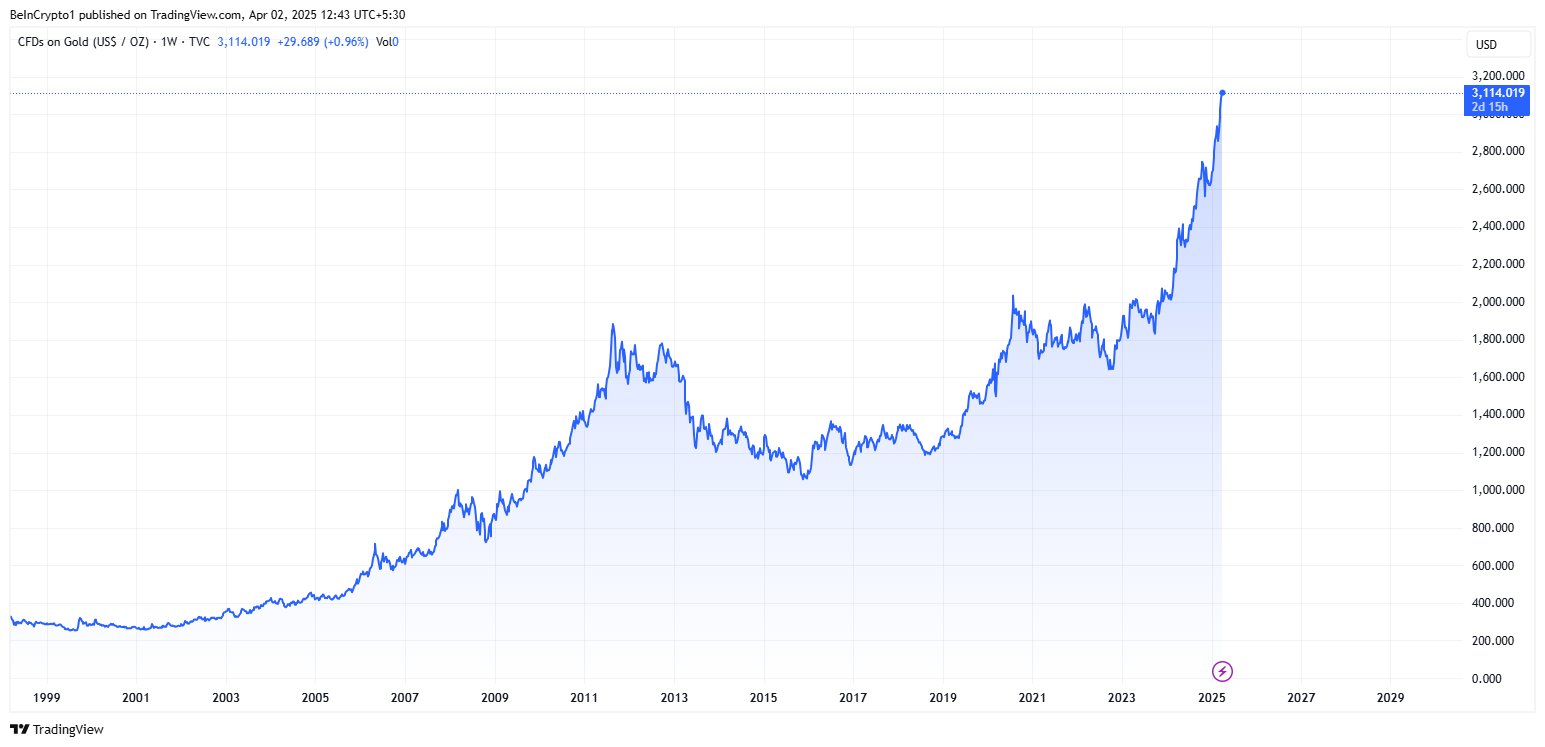
Don Tapscott, co-founder of Blockchain Research Institute, argues that tokenized gold could transform the $13 trillion gold market by bringing transparency, liquidity, and new financial models.
Based on this assumption, he questioned why gold is still stored in vaults as it was in the 1800s. Meanwhile, assets like Bitcoin (BTC) and stablecoins have gone digital. He believes blockchain technology can revolutionize gold’s role in finance.
“The US government could even tokenize its gold reserves, track them immutably, and use them in innovative ways,” Tapscott explained.
He stated that such an outcome would enable fractional ownership, on-chain verification, and increased accessibility to investors worldwide.
Meanwhile, companies such as Paxos and Tether lead the charge in tokenized gold offerings. Paxos holds a 51.74% market share, while Tether’s holdings follow closely behind at 46.69%.
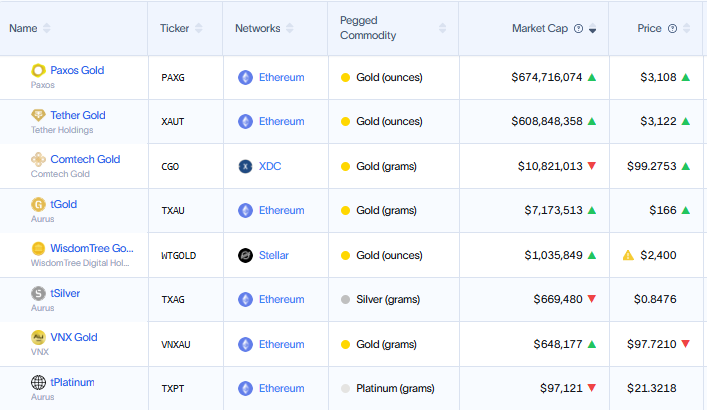
Publicly listed Matador Technologies is taking a unique approach by tokenizing gold on the Bitcoin blockchain. This offers investors a digital claim on both physical gold and limited-edition digital art.
“We believe that the next generation of financial powerhouses will likely emerge from the tokenization revolution. It’s still early, and the playing field is wide open. Matador and others have the bull by the horns,” Tapscott noted in a recent article.
Gold Tokenization in the US: A Bold Policy Shift?
The momentum behind tokenized gold has also reached the US government. Following President Trump’s March 5 executive order to establish a Strategic Bitcoin Reserve (SBR), policymakers are exploring ways to modernize gold holdings.
Treasury Secretary Scott Bessent has indicated that the US will move to “monetize its assets,” leading some to speculate that Fort Knox gold could be tokenized.
“US Treasury Secretary Scott Bessent says, all the GOLD is there, as he has no plans to visit Fort Knox or to revalue GOLD reserves in a sovereign wealth fund. He speaks on “Bloomberg Surveillance,” Erik Yeung noted.
Senator Cynthia Lummis has also proposed swapping some of the US government’s gold reserves for Bitcoin. US gold reserves are held at a book value of $42 per ounce—unchanged since 1973—despite the market price exceeding $3,000 per ounce.
While the US explores tokenization, geopolitical rivals China and Russia may take an even bolder step—launching a gold-backed stablecoin. Bitcoin maximalist Max Keiser recently highlighted BRICS’ plans to introduce a gold-backed stablecoin.
“The BRICS, principally Russia, China & India, will counter any attempt by the US to introduce a hegemonic, USD-backed stablecoin — with a Gold-backed stablecoin. The majority of the global market will favor a Gold-backed coin since it’s inflation-proof (unlike the USD) and doesn’t boost unwelcome US hegemony. India already runs on a defacto Gold standard and Sharia law in Muslim countries would dictate Gold over a USD riba-coin as well. To be clear, a BTC-backed stablecoin is not fit for purpose due to volatility,” Keiser stated.
Further, Keiser suggested that a stablecoin backed by gold would outcompete USD-backed stablecoins in global markets. He argues that gold is more trusted than the US dollar, tracks inflation effectively, and remains minimally volatile compared to Bitcoin’s price swings.
Russia’s recent rejection of Bitcoin for its National Wealth Fund in favor of gold and the Chinese yuan adds weight to this theory.
With an estimated 50,000 tonnes of combined gold reserves, China and Russia could leverage blockchain technology to introduce a new gold-backed digital asset. Such an action would challenge the US dollar’s dominance in global trade.
Gold vs. Bitcoin: The Safe Haven Debate Intensifies
Gold’s record-breaking rally has reignited debates over its role as a safe-haven asset compared to Bitcoin. Some analysts speculate that Bitcoin could soon follow gold’s trajectory, setting new all-time highs.
However, in economic uncertainty and President Trump’s 2025 tariff policies, gold remains the preferred safe-haven asset. Historically, gold has been the go-to store of value during trade wars and inflationary periods. Meanwhile, Bitcoin’s volatility raises concerns for risk-averse investors.
Despite these differences, the rise of tokenized gold highlights a convergence between traditional and digital finance. As financial markets advance and investors rebalance their portfolios, gold and Bitcoin will likely coexist in a contemporary monetary system.
Whether through tokenization, gold-backed stablecoins, or government-led blockchain initiatives, the financial playing field is shifting.
As traditional institutions increasingly adopt blockchain, the stage is set for transforming how the world perceives, trades, and stores gold relative to Bitcoin.
Disclaimer
In adherence to the Trust Project guidelines, BeInCrypto is committed to unbiased, transparent reporting. This news article aims to provide accurate, timely information. However, readers are advised to verify facts independently and consult with a professional before making any decisions based on this content. Please note that our Terms and Conditions, Privacy Policy, and Disclaimers have been updated.
-

 Market23 hours ago
Market23 hours agoBNB Price Faces More Downside—Can Bulls Step In?
-

 Bitcoin24 hours ago
Bitcoin24 hours agoTokenized Gold Market Cap Tops $1.2 Billion as Gold Prices Surge
-

 Regulation18 hours ago
Regulation18 hours agoKraken Obtains Restricted Dealer Registration in Canada
-

 Altcoin22 hours ago
Altcoin22 hours agoWhat’s Fueling The Shibarium Boost?
-

 Bitcoin20 hours ago
Bitcoin20 hours agoLummis Confirms Treasury Probes Direct Buys
-

 Altcoin14 hours ago
Altcoin14 hours agoHere’s Why This Analyst Believes XRP Price Could Surge 44x
-

 Altcoin10 hours ago
Altcoin10 hours agoFirst Digital Trust Denies Justin Sun’s Allegations, Claims Full Solvency
-

 Altcoin20 hours ago
Altcoin20 hours agoFranklin Templeton Eyes Crypto ETP Launch In Europe After BlackRock & 21Shares




